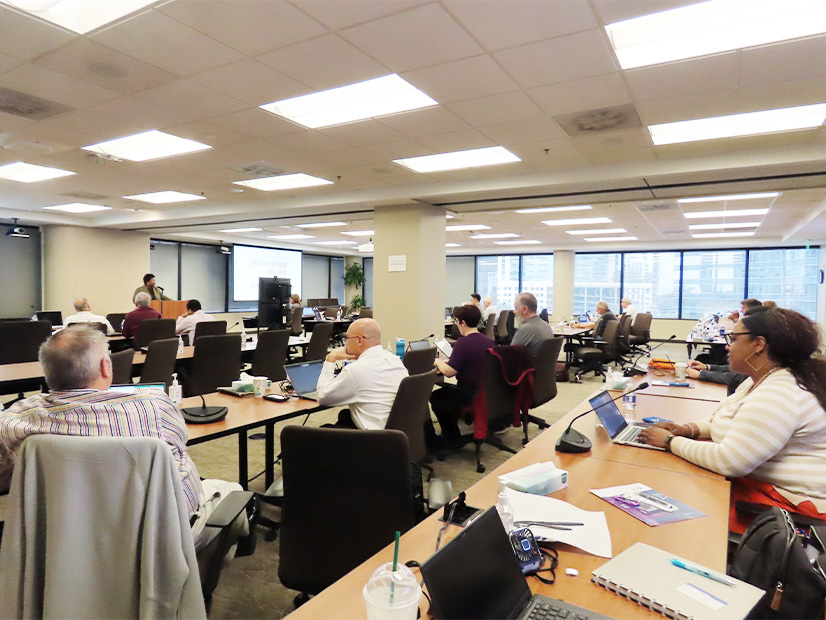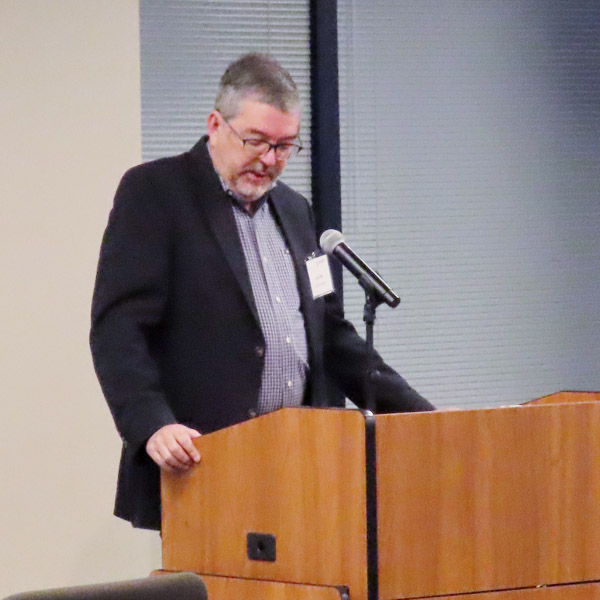
ATLANTA — Speakers at the North American Generator Forum’s annual Compliance Conference this week acknowledged that “the volume of [standards development] projects has increased over the last two years” at NERC and that this heavier schedule has significantly burdened industry.
“I have been at NERC for nine years now, [and] I have never been this busy in my life,” Latrice Harkness, director of standards development, told attendees at the ERO’s headquarters Wednesday. “Even as a [standards] developer, I only had maybe two or three projects at a time. Right now, our developers sometimes are carrying about four development projects.”
Jay Cribb, cybersecurity program manager at Southern Co., concurred in a later presentation, sharing a screenshot of a list of reliability standards under development from NERC’s website and claiming he had never “seen it quite so lengthy.”
Of the ERO’s 26 active standard development projects, Harkness observed that 17 involve addressing security threats through NERC’s Critical Infrastructure Protection (CIP) standards or adapting to the transforming grid, including changes in the resource mix and the spread of inverter-based resources (IBRs). Additional high-priority projects include Project 2021-07 (Extreme cold weather grid operations, preparedness and coordination) and Project 2022-03 (Energy assurance with energy-constrained resources).
Noting industry feedback that “everything cannot be high” priority, Harkness said the ERO has worked to triage the standards projects and separate out as many low- and medium-priority efforts as possible. Two IBR-related projects are included in the medium-priority group, along with an effort to modify CIP reporting standards; low-priority projects include one dedicated to revising the definition of “reporting area control error” and another concerning modeling of electromagnetic transient events.
“Just because they fall into the low [priority] does not mean that they’re not going to get the attention they need to get some very good-quality standards,” Harkness said. “This just means that … we’ve been hearing from industry [that] we are too busy; we cannot keep up with the overlapping comment periods. And so we are trying internally [to] look at what subject matter experts those projects are going to be drawing on within industry and also trying to make sure that we post those projects based on the information we have so we don’t overload industry.”
Update on Cold Weather Standards
Venona Greaff, compliance manager at Occidental Energy Ventures, also gave attendees a progress update on Project 2021-07.
The project was begun in response to the February 2021 winter storms that led to the largest controlled firm load shed event in U.S. history. Currently it is in the second phase of development, which began after FERC approved the new reliability standards EOP-012-1 (Extreme cold weather preparedness and operations) and EOP-011-3 (Emergency operations) this year. (See FERC Orders New Reliability Standards in Response to Uri.)
Greaff, who serves on the standard drafting team for Project 2021-07, noted that EOP-011-4 (Emergency operations) and TOP-002-5 (Operations planning), produced in the project’s second phase, received industry approval last week after NERC’s Standards Committee approved both standards for a shortened public comment and ballot period. (See NERC Committee Agrees to Shortened Standard Comments.) EOP-011-4 passed with a 73.29% weighted segment value, while TOP-002-5 received 79.56%.
“Those latest revisions are going to be moved forward to the NERC Board of Trustees for their approval in the next few weeks, and it will move on to FERC from there,” Greaff said. The SDT will now move to the final phase, revisions to EOP-012-1, which FERC has directed to be submitted by February 2024.


